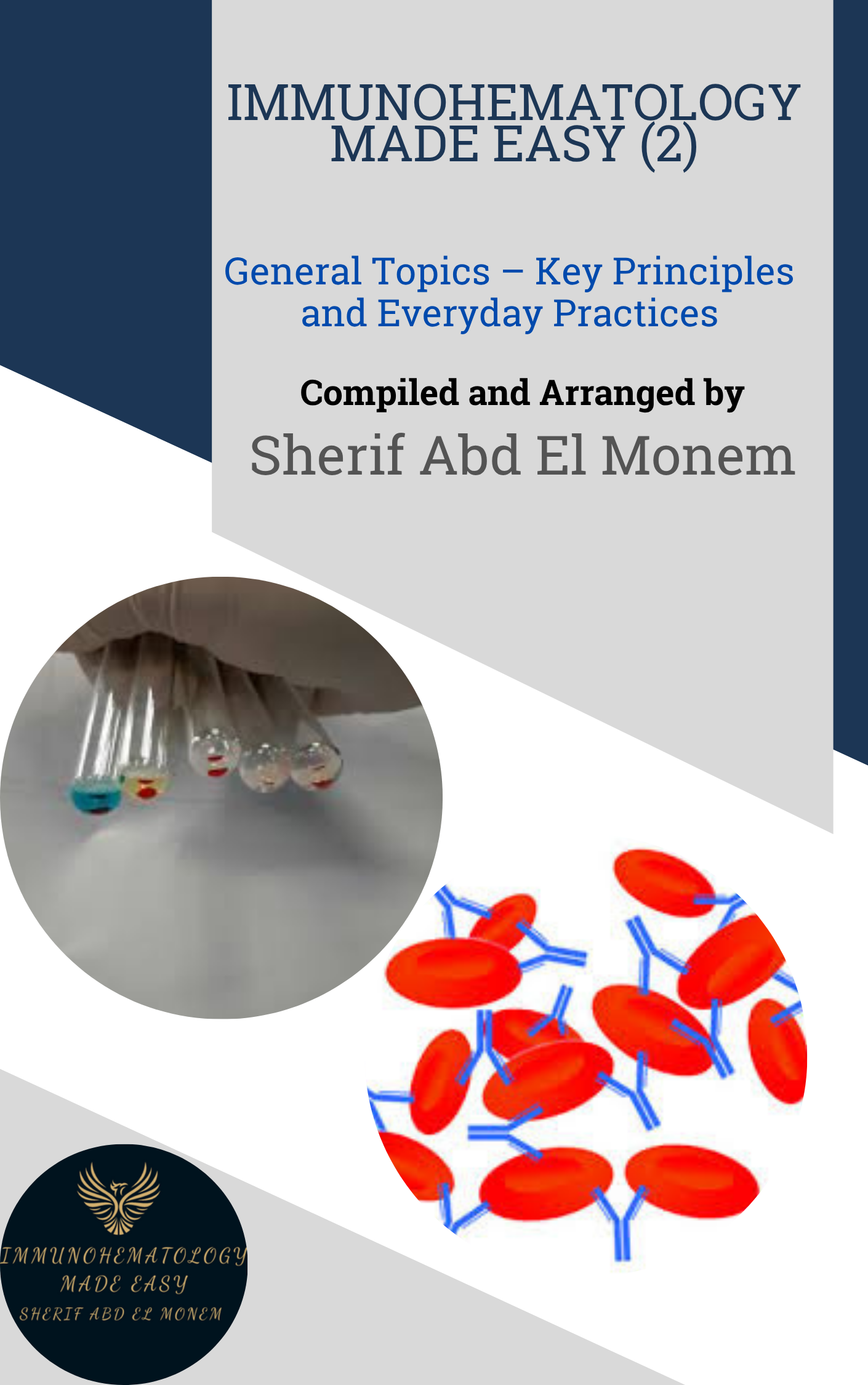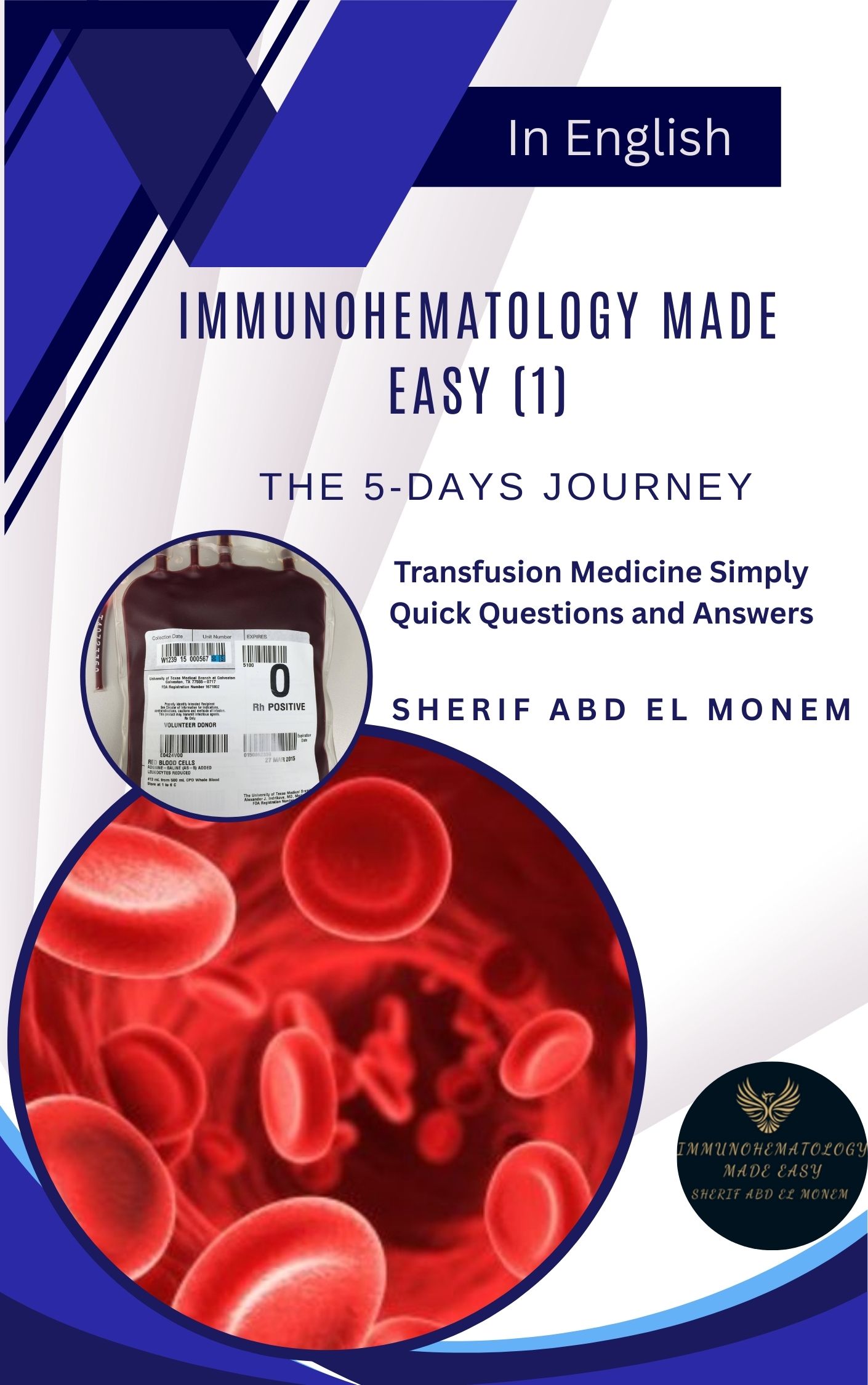Lecture 2a: Introduction to Innate Immunity
Mastering Innate Immunity: Defending Against Pathogens
In the realm of immunology, the innate immune system serves as our first line of defense against a multitude of pathogens. This article will delve into the intricacies of innate immunity, exploring pathogen categories, its goals, and its vital role in our immune response. Let’s embark on this journey of discovery.
Pathogen Categories
Understanding the enemy is crucial in any battle. In the realm of innate immunity, we categorize pathogens into four primary classes:

Immunohematology Made Easy (2)
General Topics – Key Principles and Everyday Practices
📘 Available now in PDF & EPUB formats
🔗 Visit Store
Viruses
Viruses, the cunning infiltrators, are composed of nucleic acids enclosed in various envelopes or coatings. They’re obligate intracellular pathogens, reliant on host cells for their replication. They come in two flavors, DNA viruses like pox viruses, and RNA viruses such as HIV and coronaviruses.
Bacteria
Bacteria, the microscopic foes, can be divided into intracellular and extracellular varieties. Intracellular bacteria, including the likes of Mycobacterium tuberculosis and Salmonella species, possess the ability to infect both extracellularly and intracellularly. Extracellular bacteria, on the other hand, have distinct characteristics that set them apart.
Fungi
Fungi, the eukaryotic mischief-makers, bring their unique cellular structures and modes of reproduction into play. These microorganisms can cause infections in humans that are often challenging to combat.
Parasites
Parasites, the shape-shifters of the pathogen world, encompass a variety of organisms like protozoa and helminths. Their complex life cycles involve multiple hosts, making them a formidable adversary.
Goals of Innate Immunity
Innate immunity has a noble mission: to detect and eliminate pathogens through various mechanisms:
Physical Barriers
First, our body employs physical barriers like the skin, mucous membranes, cilia in respiratory tract epithelium, and the stomach’s acidic pH. These barriers form an impenetrable fortress, preventing pathogenic microorganisms from infiltrating.
Sentinel Phagocytes
Meet the sentinels of our immune system: macrophages, neutrophils, and dendritic cells. These specialized immune cells are expert pathogen-engulfers and executioners, always ready to pounce and eliminate threats.
Inflammation
Inflammation, the body’s red alert, is a protective response triggered by the immune system. It’s the cavalry charging in to eliminate pathogens and initiate tissue repair. Phagocytes play a crucial role in orchestrating this inflammatory symphony.
This article is just the tip of the iceberg in our exploration of innate immunity. Upcoming lectures will delve deeper into the immune system’s intricacies, including pattern recognition receptors, programmed cell death, and complement activation. Stay tuned for a comprehensive understanding of this fascinating subject.
Categorizing Pathogens
In our quest to understand innate immunity, let’s explore how immunologists categorize microorganisms based on their cellular niches and molecules detectable by the immune system.
Cellular Niches and Molecules Produced
Microorganisms, the diverse array of pathogens, are categorized based on where they reside and the molecules they produce. Here’s the breakdown:
Intracellular Bacteria
- Some bacteria are sneaky intruders, capable of infecting host cells under certain conditions.
- Examples include the notorious Mycobacterium tuberculosis and the stealthy Chlamydia.
Extracellular Bacteria
- Bacteria, both intracellular and extracellular, can be further classified as gram-negative or gram-positive based on their cell wall thickness.
- Gram-negative bacteria, like Pseudomonas aeruginosa, often pose risks to immunocompromised individuals.
Fungi
Eukaryotic fungi, with their unique cellular structures, bring their own set of challenges into the mix.
Parasites
The world of parasites, including protozoa and helminths, offers a complex web of hosts and infections to unravel.
This categorization lays the foundation for understanding how our immune system mounts defenses against specific types of pathogens.
Innate Immunity’s Role in Adaptive Immune Responses
Innate immunity isn’t just a standalone defense; it’s a vital catalyst for our adaptive immune responses. Let’s explore how this crucial interplay unfolds.
Antigen Presentation
Innate immunity takes the lead in antigen presentation, enabling precise, pathogen-specific responses days after infection. This intricate process will be unveiled in forthcoming lectures, so stay tuned for the complete picture.
Anatomic Barriers and Phagocytes in Innate Immunity
Our body’s physical defenses and the relentless phagocytes are essential pillars of innate immunity. Let’s take a closer look.
Physical Barriers to Infection
Epithelial surfaces, including the skin, gut, lungs, eyes, nose, and oral cavities, form our first line of defense. Tight junctions, mucus, and other mechanisms protect us from invasion.
Phagocytes in Innate Immunity
Meet the phagocytes: immune cells specialized in engulfing and destroying pathogens. They play a pivotal role in early defense mechanisms against infections.
This marks just the beginning of our journey into the intricate world of innate immunity. Stay with us as we unravel the remaining layers of this fascinating subject.
Epithelial Defense Mechanisms
Our epithelium employs ingenious mechanical and chemical defense mechanisms to fend off pathogens. Let’s explore their arsenal:
Mucus and Mechanical Defense
Mucus, the unsung hero, gets mechanically moved through systems like sneezing and coughing, while tight junctions and fluid flow add layers of protection.
Chemical Defenses
Epithelial defenses include antimicrobial peptides like defensins and environments in the gut that deter uninvited guests. Enzymes further bolster the defense.
Commensal Microbiota
Our epithelial surfaces host commensal microbes, creating a vibrant ecosystem. These friendly microbes outcompete pathogens for resources and space, bolstering our defenses.
Pathogen Infection of Barrier Tissue
Sometimes, pathogens employ strategies to breach our barriers. Let’s delve into how they manage this feat:
Physical Injury and Molecular Evolution
Pathogens can breach barriers through physical injury or by evolving molecular mechanisms that override our defenses. The process of successful infection is termed pathogenesis.
Immune Sentinels
Immune cells stand ready beneath the barriers, ready to respond to any breach. Their vigilance plays a crucial role in our defense.
This marks the end of our exploration of innate immunity’s early layers. In the following sections, we’ll venture deeper into the immune response’s intricate mechanisms.
Early Induced Responses of Innate Immunity
As the battle against pathogens intensifies, our innate immune system deploys an array of early induced responses. Let’s uncover these vital components:
Professional Antigen-Presenting Cells
Macrophages and dendritic cells, the immune system’s elite, take center stage. Macrophages are voracious eaters, while dendritic cells are the masters of antigen presentation.
Mast Cells, Eosinophils, and Basophils
Mast cells wield granules filled with inflammatory molecules, playing pivotal roles in parasitic infections. Eosinophils and basophils, on the other hand, come into play during allergies and parasitic encounters.
Neutrophils: The Phagocytic Powerhouses
Neutrophils, our trusty phagocytes, patrol the extracellular space, rapidly digesting pathogens and maintaining our defenses.
This wraps up our exploration of the early induced responses of innate immunity. In the sections to come, we’ll delve further into the specialized roles of immune cells and their mechanisms of action.
Tissue Resident Macrophages and Neutrophils
Within our tissues, specialized macrophages and neutrophils stand guard, ready to defend our bodies. Let’s explore their roles and mechanisms:
Tissue Resident Macrophages
These macrophages, adapted to specific tissue microenvironments, play crucial roles throughout our body, including at epithelial barriers. They are replenished by circulating monocytes.
Neutrophils: The Most Abundant Immune Cells
Neutrophils, abundant but short-lived, primarily circulate in the blood. They spring into action when infection signs emerge and are crucial in maintaining our defenses.
Phagocytosis Mechanisms
Both macrophages and neutrophils employ various mechanisms for phagocytosis, including surface receptors, signaling cascades, and phagosome formation.
Killing Mechanisms
Phagocytes unleash a barrage of lethal tactics, including acidic organelles, reactive oxygen and nitrogen species, antimicrobial peptides, and enzymatic interference.
This comprehensive look at tissue resident macrophages and neutrophils brings us closer to understanding the intricacies of innate immunity. Stay with us as we delve deeper into this fascinating subject.
Inflammatory Signaling
Inflammation, a vital component of our immune response, is orchestrated by macrophages and neutrophils. Let’s explore how these immune cells produce inflammatory signaling molecules:
Inflammation Defined
Inflammation, characterized by clinical symptoms, is the body’s response to infection and injury.
Inflammatory Signaling
Macrophages and neutrophils are prolific producers of signaling molecules that set the stage for inflammation’s grand entrance.
Conclusion
This article marks the culmination of our journey through the intricacies of innate immunity and inflammation. It’s a testament to the remarkable complexity of our immune system and its tireless efforts to safeguard our health.
Overview of Immune Cell Types and Disease Responses
As we wrap up our exploration of innate immunity and inflammation, let’s briefly touch on the relationship between immune cell types and their responses to specific disease contexts:
Immune Cell Recruitment to Infection Sites
Inflammation acts as a beacon, guiding immune cells to the site of infection. Cytokines and chemokines are the heralds responsible for orchestrating this process.
Leukocyte Transit from Blood to Tissues
Inflammatory cytokines activate vascular endothelium, allowing leukocytes to transition from the bloodstream to the site of infection.
Macrophage Differentiation and Phagocytic Functions
Monocytes entering tissues can transform into macrophages, equipped with the vital role of phagocytosis.
Importance of Limiting Inflammation
While inflammation is essential for immune responses, it must be localized to the site of infection. Uncontrolled inflammation, as seen in sepsis, can have dire consequences.
Consequences of Uncontrolled Inflammation (Sepsis)
Sepsis, characterized by systemic inflammation, can lead to systemic edema, vessel occlusion, and organ failure, making it a life-threatening condition.
Proper Resolution of Inflammation
Achieving the delicate balance between inflammation and resolution is paramount for a successful immune response. Tight control of inflammatory signals, including cytokines, is pivotal.
This concludes our journey through the fascinating world of innate immunity and inflammation. May this newfound knowledge empower you to appreciate the intricate workings of our immune system and its tireless efforts to keep us healthy.
Summary: Innate Immunity and Inflammation
To summarize our exploration of innate immunity and inflammation:
- Innate immunity serves as the immediate defense against a wide array of pathogens, employing physical barriers and activating phagocytes.
- Inflammation is a set of processes that recruit and activate immune cells and signaling molecules to the site of infection.
- Innate immunity plays a crucial role in promoting immune responses but should be limited to the local site of infection.
- Uncontrolled inflammation, as seen in sepsis, can lead to systemic complications and organ failure.
- Proper resolution of inflammation is necessary for an effective immune response.
Thank you for accompanying us on this enlightening journey through the intricacies of our immune system. May this knowledge serve as a beacon of understanding in the realm of innate immunity and inflammation.
Download the lecture transcript

Immunohematology Made Easy (2)
General Topics – Key Principles and Everyday Practices
📘 Available now in PDF & EPUB formats
🔗 Visit Store

📘 New to Blood Bank?
Start your 5-day journey with Immunohematology Made Easy — a simple, beginner-friendly guide with real-life examples!
👉 Get Your Copy Now